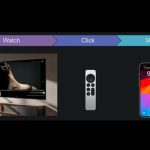The rapid and global growth of the handheld device market, the emergence of more robust network infrastructures, and the drop in the cost of bandwidth is causing a shift in the way people consume their favourite content. Today, users worldwide are increasingly turning to handheld devices for streaming live broadcasts and watching video-on-demand. As a […]
 The rapid and global growth of the handheld device market, the emergence of more robust network infrastructures, and the drop in the cost of bandwidth is causing a shift in the way people consume their favourite content. Today, users worldwide are increasingly turning to handheld devices for streaming live broadcasts and watching video-on-demand. As a result, TVs traditional over-the-air model is slowly starting to erode, making way for video-over-IP applications that are providing users with access to streaming video anytime, anywhere.
The rapid and global growth of the handheld device market, the emergence of more robust network infrastructures, and the drop in the cost of bandwidth is causing a shift in the way people consume their favourite content. Today, users worldwide are increasingly turning to handheld devices for streaming live broadcasts and watching video-on-demand. As a result, TVs traditional over-the-air model is slowly starting to erode, making way for video-over-IP applications that are providing users with access to streaming video anytime, anywhere.
As this preference for over-the-top (OTT) content continues to creep towards critical mass, some stakeholders are still scrambling to match new customer demands with infrastructures that will provide value-added experiences that attract, retain, and increase their subscription base. Furthermore, several sub-trends have already started to appear.
Viewing Trends
Within the travel and hospitality sector, the Bring Your Own Device (BYOD) movement is on the rise. Already used in boardrooms and classrooms, BYOD enables users to consume content disseminated within third-party environments directly on their personal devices. Cruise ships, hotels, trains, and inflight entertainment systems have already begun exploring how to stream protected content directly to users on their smart phones, tablets, or laptops, enabling consumers to access the viewing experiences they are accustomed to, even during travel.
Within living room settings, multi-screen set-ups have given birth to the emerging “second screen” phenomenon. As home viewers continue to watch content via big-screen devices such as smart TVs, they have begun to complement their experience with their handheld connected devices. This simultaneous multiscreen interaction enables viewers to obtain real-time access to supplementary videos on the programmes they are watching, catch-up on missed broadcasts via video-on-demand, or seek out details about the advertisements that appear on their screens.
Challenges for Providers
For content providers, the question is how to effectively address a migrating subscription base that is seeking high quality TV-like experiences on multiple screens from the location of their choice. To date, many broadcasters have been forced to react defensively to answer this challenge, since viewers are rapidly turning to online subscriptions costing as little as ten dollars per month. As a result, some providers are quickly turning out apps and other user experiences that add costs and complexity to their rapidly changing workflows without properly designing an infrastructure that will fully take advantage of the TV anytime, anywhere trend.
Another challenge is the fragmentation of the device marketplace. Users continue to adopt all different types of devices, forcing providers to supply content in several resolutions, bitrates, and bandwidth capabilities, which also add complexity and cost to streaming workflows. For instance, different profiles are required for Apple, Android, and Windows devices, leaving providers to wonder how they can reach more than 50% of their traditional subscribers on their devices when new devices are constantly being introduced to the market. To compound matters, providers are usually not making any more money after investing in complex multi-platform solutions since online content is often included in viewers traditional TV subscription packages. Furthermore, providers must ensure that viewers are obtaining value-added experiences for the online content they consume.
Complexity, Cost and Value
The best way to reduce costs and complexity is to invest in an infrastructure that is designed to work with multiple streaming formats and reach different types of devices. This might still mean working with different companies to ensure that all the right pieces are put together, but this number can be significantly reduced by selecting partners in the media server industry that will deliver content to Flash, Smooth Streaming clients, HLS, set-top boxes, and more.
Also, similar to Comcasts model, another excellent consideration for providers is to consider moving to a complete IP platform that eliminates the need for creating two separate sets of content: one for big screens and a completely separate set for smaller ones. This way, processes are streamlined by pushing content through a single workflow by creating HD video for big screens that is simply scaled down for smaller screens and resolutions.
In terms of adding value for customers, providers must ensure that all facets of the viewing experience are provided at a seamless, high-quality level. For instance, in the early days of Hulu, programmes were provided using high-definition streams yet advertisements were sent out at a lower resolution with unreliable audio, which provided a jarring experience for viewers. Whether it is interstitial advertisements, sports/stock tickers, or overlay advertisements, providers must ensure that every element of content is adapted to the individual streaming experience.
A major part of this requirement is ensuring delivery via adaptive bitrate (ABR) streaming a method for detecting a users available bandwidth during playback. Essentially, the server will automatically adjust the streaming quality in order to offer a seamless, uninterrupted viewing experience. From an advertising perspective, IP video can also ensure that providers deliver appropriate advertisements to viewers based on their individual profiles.
Once providers implement an IP infrastructure, they can measure success based on the number of application downloads to shed light on how many people are actually using their service. Furthermore, if providers build a system that adequately incorporates advertising, keeping in mind that the market is starting to experience a small increase in streaming advertising expenditures, value and appreciation, providers can begin to experience a potential return on investment.
MPEG-DASH and the Future
Today, companies such as Microsoft and Adobe have already endorsed MPEG-DASH, the new standard streaming protocol meant to unify the markets diverse formats and devices. Provided that the adoption trend continues, it will be interesting that within a few years, content producers might no longer need to pick proprietary platforms for delivering their content. This will obviously make decision-making much simpler and provide potential cost savings.
However, several questions remain before MPEG-DASH can deliver on its anticipated benefits. First, there is still no consensus on which single standard will be used, which codec will be adopted, and which encoding profiles will be available. Also, there is the ongoing question of what Apple will do, since the company continues to improve HLS its proprietary streaming protocol. But once things are in place, MPEG-DASH could facilitate the world of IP streaming by providing a standard that might finally address most streaming needs. Added capabilities such as surround sound and multiple language tracks could also find their way on to devices, further augmenting the quality of experience for users on every screen, wherever and whenever they wish to consume their content.
Chris Knowlton is VP of product management for Wowza Media Systems, a media server software company delivering an industrial-strength, future-proof infrastructure for streaming live video, video-on-demand, live recording and audio/video chat.













































































